Laptops provide mobility and portability, which is why a Wi-Fi connection is often preferred over a wired connection – so the user can roam about without being tied down by a wire. However, this strategy often backfires when you have more than one Wi-Fi SSID saved on your Windows computer, and it stays connected to the Wi-Fi, which is further away than the physically closer one.
Furthermore, Wi-Fi devices mean weaker signal strength. If your device does not receive good Wi-Fi signal strength, it can slow your browsing, not load web pages at all, take longer to perform downloads, etc.
This can happen even when your network’s bandwidth is as it should be. The Windows operating system fails to switch automatically to the Wi-Fi network with greater signal strength. In this case, you must disconnect manually from the network, and then connect to the network with the stronger Wi-Fi signals.
That being said, there are ways you can automatically make your PC switch to a Wi-Fi network that has a stronger signal strength. This is especially useful if you are fond of moving from one place to another with your laptop and having multiple routers placed around you.
Table of Contents
This Page Covers
Automatically Switch to the Strongest Wi-Fi Signal
There are three ways to configure your Windows PC to connect to the closest Wi-Fi router. Before we proceed, let us warn you that although performing the following methods will automatically make your system switch Wi-Fi network, this can often become frustrating when the network begins to make too frequent jumps between multiple Wi-Fi SSIDs.
Connect to Stronger Wireless Networks Aggressively
One way to achieve this goal is through the properties of your network card. Wi-Fi network cards have an attribute called “Roaming Aggressiveness,” which controls how aggressively it jumps between networks when another is detected. You can select from the following list of options:
- 1. Lowest
- 2. Medium-low
- 3. Medium
- 4. Medium-high
- 5. Highest
“1. Lowest” means that Windows will rarely change the Wi-Fi network by itself, even when a network with stronger Wi-Fi signals is available, whereas “5. Highest” means that Windows will jump to a better network in a jiffy, when available. By default, Roaming Aggressiveness is set to “3. Medium.”
Perform the following steps to configure Roaming Aggressiveness to its highest possible value:
-
Press the Windows Key + R shortcut keys to open the Run Command box.
-
Type in “ncpa.cpl” and press Enter to open the Network Connections applet.

Open Network Connections applet -
Right-click on the Wi-Fi network adapter and click Properties.

Open wi-fi properties -
Click Configure.

Configure Wi-Fi -
Switch to the Advanced tab, select “Roaming Aggressiveness,” and then select “5. Highest” from the drop-down menu.

Set Roaming Aggressiveness to the highest -
Click Ok.
-
Now restart your computer for the changes to take effect.
The work is not yet completed. You must now also configure your computer to look for other Wi-Fi networks, whilst it is still connected to the current Wi-Fi SSID. This must be repeated for every Wi-Fi network you connect to. Here is how to do it:
-
In the Network Connections applet, right-click the Wi-Fi network adapter and click Status.
Note: If the option is greyed-out, it is because you are currently not connected to a Wi-Fi network. In that case, connect to the Wi-Fi SSID and repeat this step.

Check Wi-Fi status -
Click “Wireless Properties.”

Open wireless properties -
Check the box next to “Look for other wireless networks while connected to this network,” and then click Ok.
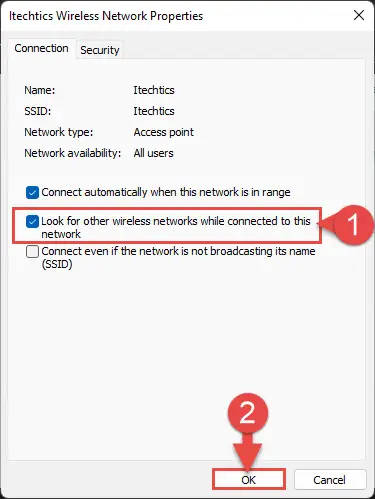
Keep looking for other wireless networks
Your computer should now aggressively switch to a Wi-Fi network with stronger signal strength than the one it is already connected to.
Connect to Strongest Wi-Fi Network using Wifinian
Wifinian is a third-party, free utility that you can use to configure your PC to automatically switch to the Wi-Fi network with the greatest signal strength. The utility can be downloaded from the Microsoft Store.
Follow these steps to use Wifinian to make your PC switch to a better wireless network when available:
-
Click on this link to open the Wifinian Microsoft Store page, and then click “Get in Store app.”
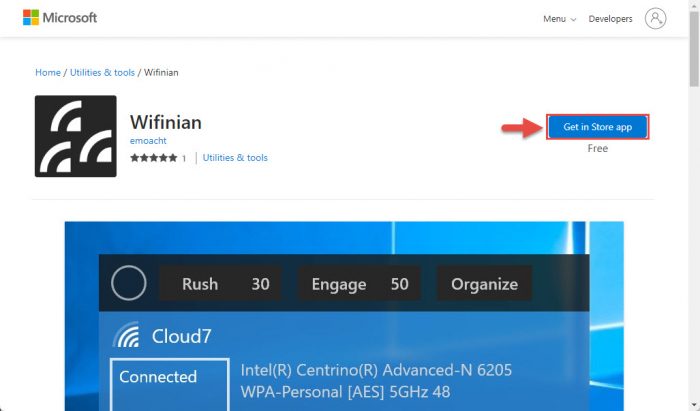
Get app -
From the pop-up, click “Open Microsoft Store.”

Open in Store -
The Microsoft Store app will now open. Click Get.

Install Wifinian
The application will now be installed on your PC. Open it. Once it runs, you can access it from your taskbar.
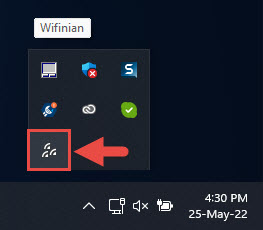
Clicking on its icon will expand a floating menu displaying your saved Wi-Fi networks, along with other details and options. Here, you can click on the Auto Switch button to toggle it on and manage to which network(s) your computer automatically switches.
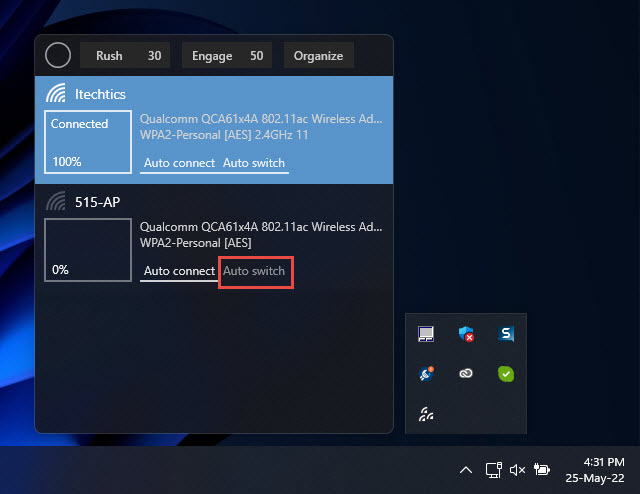
Note that the Wifinian application has been added to the “Startup” list, but is disabled by default. You can enable it so the app will run automatically whenever you log into your user account.
Connect to Strongest Wi-Fi Network using Command Prompt
If you are a fan of the Windows command line interface, then you can connect to the strongest Wi-Fi network using the Command prompt as well.
Use the following steps to connect to a different wireless network using Command Prompt while enabling auto-connect:
-
Press the Windows Key + R to open the Run Command box.
-
Type in “CMD” and press CTRL + Shift + Enter to open the Command Prompt with elevated privileges.
-
Run the following command to view a list of saved Wi-Fi SSIDs:
netsh wlan show profiles
Show a list of saved wireless networking using Command Prompt -
Note down the name of the Wi-Fi network to connect with.
-
Use the following command to connect to the wireless network while substituting [Wi-FiName] with the SSID of the Wi-Fi with the strongest signals:
netsh wlan set profileparameter name="[Wi-FiName]" connectionmode=auto autoswitch=Yes
Automatically connect to the strongest Wi-Fi from Command Prompt
How to Check Wi-Fi Signal Strength
Even if you have configured your PC to automatically switch to a Wi-Fi network with greater signal strength, we suggest you keep an eye on it. Apart from the native Windows methods, you can also use third-party applications, such as the following:
Wi-fi signal strength is measured in Decibels Milliwatts (dBm). A wireless signal, such as a Wi-Fi signal, is measured in negative numbers. Decibels are given in negative numbers because a 0 Decibel means that the human ears can just begin to hear that noise. However, anything less than 0 indicates that there are waves physically present, but cannot be heard by the human ears.
The utilities listed above state the Wi-Fi signal strength under the Received Signal Strength Indicator (RSSI), as in the image below.
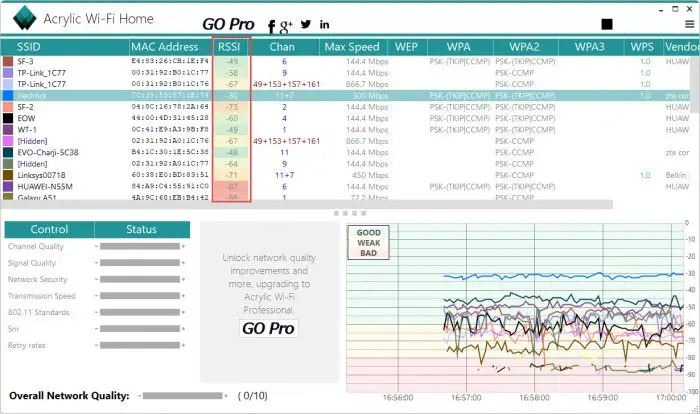
If you are wondering what RSSI values are considered good and which ones are considered weak, the table below will help you understand.
| SIGNAL STRENGTH (dBm) | Remarks |
|---|---|
| -30 | Maximum possible signal strength. |
| -50 | Excellent signal strength. |
| -60 | Good signal strength. |
| -67 | Reliable signal strength. |
| -70 | Relatively weak signal strength. |
| -80 | Unreliable. Most services will not work. |
| -90 | Possibility of disconnection. |
Closing Thoughts
After having shown methods to have your Windows PC automatically switch Wi-Fi networks for the better, we must caution you to use these features wisely since aggressive switching can lead to frequent jumping between networks, and briefly losing internet connectivity now and then.
If you do have trouble with it, you can simply undo the changes and revert them to their default state.
If you are still experiencing problems with your wireless network connectivity, then you can also try improving your Wi-Fi signal strength.



